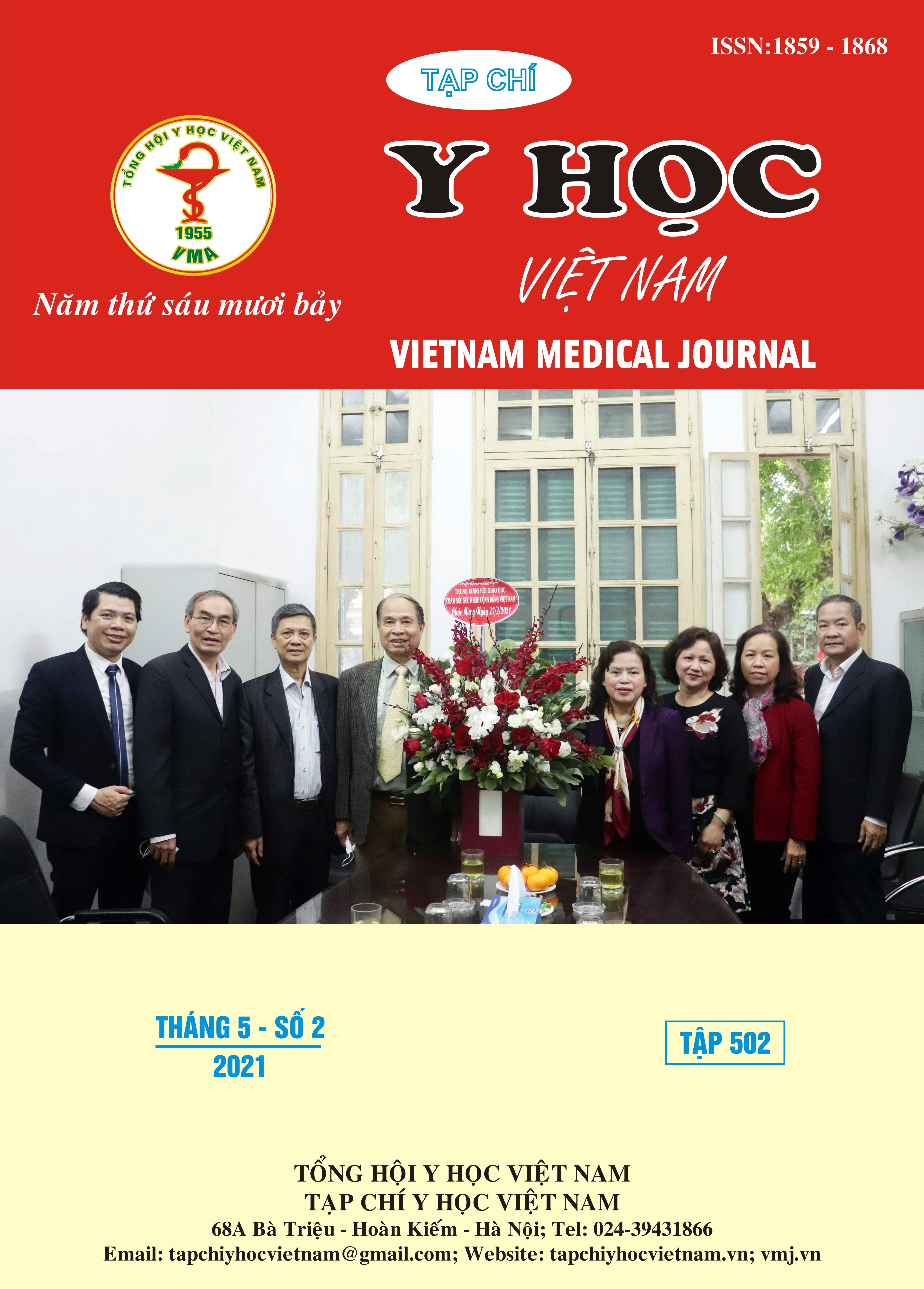EVALUATION OF SMARTPHONE USAGE AMONG STUDENTS IN HANOI USING SMARTPHONE ADDICTION SCALE-SHORT VERSION (SAS-SV)
Main Article Content
Abstract
Objectives: Evaluate socio-demographic characteristics on smartphone usage among students in Hanoi. Subjects and methods: A descriptive cross-sectional study conducted randomly on 1314 students of the second to fourth year registered from 36 universities in Hanoi. Subjects were instructed to answer a set of Smartphone Addiction Scale - Short Version (SAS-SV) questionaries online using Google Forms. Results: Among subjects, females dominated (71.61%), and the majority of the participated students aged 18-21 years old. The percentage of students with smartphone addiction was 55.56%, in which students of 18-20 years old was higher than other ages. For most students, smartphone usage began when they were around 12-14 years old. Most participated students had been using Facebook and Facebook Messenger applications on their smartphone. Smartphone addicted students did less physical exercises and part-time works compared to their non-addicted counterparts. Conclusion: Smartphone addiction is prevalent in university students in Hanoi, and differences in socio-demographic features between smartphone addicted and non-addicted students are considered as worrying, which are also alarming signs for searching solutions for researching and intervening at a wider scope in this addition state.
Article Details
Keywords
Smartphones, smartphone addiction, students
References
2. Kwon M, Kim DJ, Yang S, et al. (2013) “The Smartphone Addiction Scale: Development and validation of a short version for adolescents”. PLoS One. 8(12): e83558.
3. APPOTA Technology for Change. Vietnam Mobile APP Market Report First half of 2018. Available from: < https://appota.com/uploads/report/Vietnam_mobile_app_market_Report_2018_EN.pdf>.
4. Lopez-Fernandez O. (2017) “Short version of the Smartphone Addiction Scale adapted to Spanish and French: Towards a cross-cultural research in problematic mobile phone use”. Addictive Behaviors. 64: 275–280.
5. Haug S, Castro RP, Schaub MP, et al. (2015) “Smartphone use and smartphone addiction among young people in Switzerland”. Journal of Behavioral Addictions. 4(4): 299–307.
6. Hwang KH, Yoo YS, Cho OH. (2012) “Smartphone overuse and upper extremity pain, axiety, depression, and interpersonal relationships among college students”. Journal of the Korea Contents Association, 12(10): 365-37.
7. Geser H. (2006) “Are girls (even) more addicted? Some gender patterns of cell phone usage”. Sociology in Switzerland: Sociology of the Mobile Phone.
8. Luk TT, Wang MP, Shen C, et al. (2018) “Short version of the Smartphone Addiction Scale in Chinese adults: Psychometric properties, sociodemographic, and health behavioral correlates”. Journal of Behavioral Addictions. 7(4): 1157–1165.


